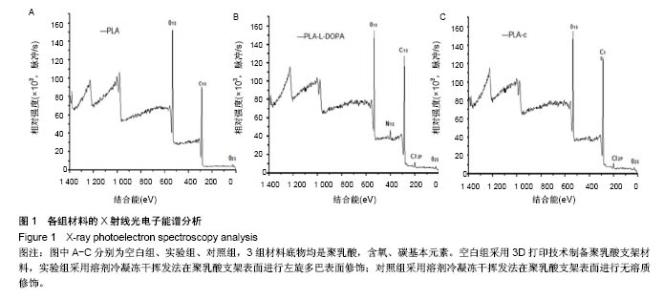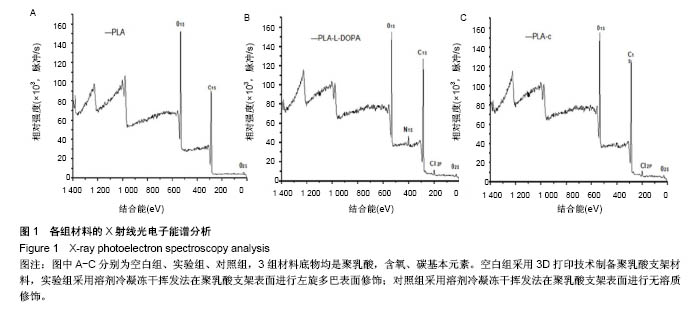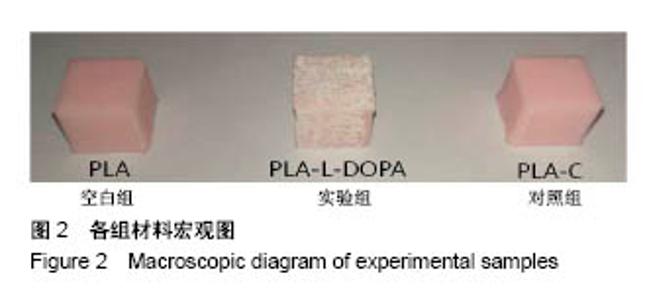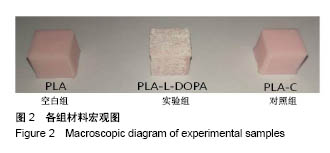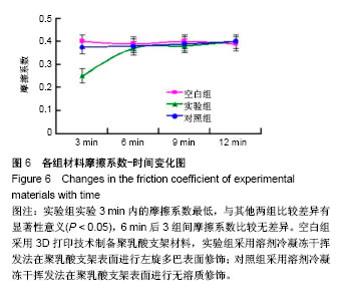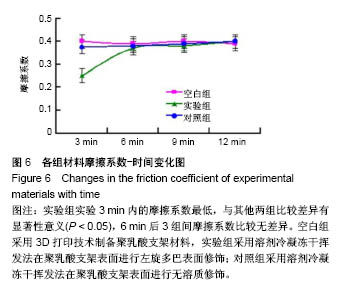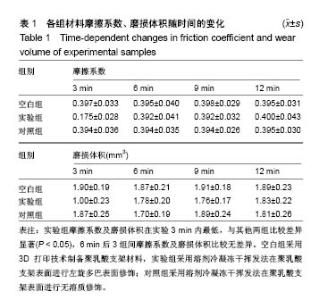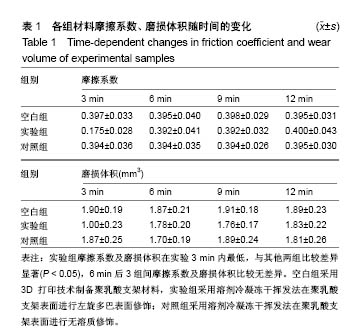| [1] Schek RM,Taboas JM,Hollister SJ,et al.Tissue engineering osteo-chondral implants for temporomandibular joint repair. Orthod Craniofac Res.2005;8(4):313-319.[2] Sharma B,Elisseeff JH.Engineering structurally organized cartilage and bone tissues.Ann Biomed Eng. 2004;32(1): 148-159.[3] Khan SN,Cammisa FP Jr,Sandhu HS,et al.The biology of bone grafting.J Am Acad Orthop Surg.2005; 13:77-86.[4] Zijderveld SA,ten Bruggenkate CM,van Den Bergh JP, et al.Fractures of the iliac crest after split-thickness bone grafting for preprosthetic surgery: report of 3 cases and review of the literature.J Oral Maxillofac Surg.2004;62(7):718.[5] Winn SR,Hollinger JO.An osteogenic cell culture system to evaluate the cotoco-mpatibility of Osteoet, a calcium sulfatebone void filler.Biomaterials.2000;21:2413.[6] Burg KJL,Porter S,Kellam JF.Biomaterial developments for bone tissue engine-ering.Biomaterials.2000;21:2347.[7] Crane GM,Ishaug SL,Mikos AG.Bone tissue engineering.Nat Med.1995;1(12):1322.[8] 杨毅,毕鑫.人工骨材料修复骨缺损:多种复合后的生物学与力学特征[J].中国组织工程研究,2014,18(16):2592-2587.[9] Chen VJ,Ma PX.The effect of surface area on the degradation rate of nanofibr-ous poly(L-lactic acid) foams.Biomaterials. 2006;27(20):3708-3715.[10] Wiria FE,Leong KF,Chua CK,et al.Poly-epsilon-caprolactone/ hydroxyapatite for tissue engineering scaffold fabrication via selective laser sintering.Acta Biomater.2007;3(1):1-12.[11] Yeon YK,Park HS,Lee JM,et al.New concept of 3D printed bone clip (polylactic acid/hydroxyapatite/silk composite) for internal fixation of bone fractures.J Biomater Sci Polym Ed. 2018;29(7-9):894-906. [12] Moro T,Takatori Y,Ishihara K,et al.Surface grafting of artifi cial joints with a biocompatible polymer for preventing periprosthetic osteolysis.Nat Mater.2004;3(11):829-836. [13] Axpe E,Oyen ML.Applications of Alginate-Based Bioinks in 3D Bioprinting.Int J Mol Sci. 2016;17(12). pii: E1976.[14] 鲍立杰,张志平,吴培斌.3D打印技术在骨科的研究及应用进展[J].中国矫形外科杂志,2015,23(4):325-327.[15] Prior S,Gamazo C,Irache JM,et al.Gentamicin encapsulation in PLA/PLGA microspheres in view of treating Brucella infections. Int J Pharm.2000;196(1):115-125.[16] Lim Soo P,Cho J,Grant J,et al.Drug release mechanism of paclitaxel from a chitosan-lipid implant system: effect of swelling, degradation and morphology.Eur J Pharm Biopharm. 2008;69(1):149-157.[17] Wu M,He J,Ren X,et al.Development of functional biointerfaces by surface modification of polydimethylsiloxane with bioactive chlorogenic acid.Colloids Surf B Biointerfaces. 2014;116: 700-706. [18] Moro T,Takatori Y,Ishihara K,et al.Surface grafting of artificial joints with a biocompatible polymer for preventing periprosthetic osteolysis.Nat Mater. 2004;3(11):829-836. [19] Wilson CJ,Clegg RE,Leavesley DI,et al.Mediation of biomaterial-cell interactions by adsorbed proteins: a review. Tissue Eng.2005;11(1-2):1-18.[20] Kang L,Galvin AL,Brown TD,et al.Quantification of the effect of cross-shear on the wear of conventional and highly cross-linked UHMWPE.J Biomech.008;41:340-346.[21] Wenzel RN.Surface roughness and contact angle.J Phys Colloid Chem.1948;53:1466-1467.[22] Singh AV,Vyas V,Patil R,et al.Quantitative characterization of the influence of the nanoscale morphology of nanostructured surfaces on bacterial adhesion and biofilm formation.PLoS One. 2011;6(9):e25029. [23] Chung TW,Liu DZ,Wang SY,et al.Enhancement of the growth of human endothelial cells by surface roughness at nanometer scale.Biomaterials.2003;24(25):4655-4661.[24] Jacobs JJ,Roebuck KA,Archibeck M,et al.Osteolysis: basic science.Clin Orthop.2001;393:71-77.[25] Childs LM,Paschalis EP,Xing L,et al.In vivo RANK signaling blockade using the receptor activator of NF-κB:Fc effectively prevents and ameliorates wear debris-induced osteolysis via osteoclast depletion without inhibiting osteogenesis.J Bone Miner Res.2002;17(2):192-199.[26] Au XH,Lei QL,Ren CL.Kinetics of protein adsorption/ desorption mediated by pH-responsive polymer layer.Chin Phys B.2015;24(11):235-241. [27] Xue A,Yu L,Sun Y.Implications from protein uptake kinetics onto dextran-grafted Sepharose FF coupled with ion exchange and affinity ligands.Chin J Chem Eng. 2017;25(7):906-910. [28] Wang X,Schiavone P.Surface instability of curved films under surface van der Waals forces.Zeitschrift Für Angewandte Mathematik Und Physik.2017;68(4):85.[29] 王凤圣.骨形态发生蛋白2在带电自组装单层膜上的吸附(英文) [J].中国科学院大学学报,2017,34(1):55-63.[30] Yu H,Liu Y,Wang Y,et al.A study on poly(N-vinyl-2-pyrrolidone) covalently bonded NiTi surface for inhibiting protein adsorption.Prog Nat Sci Mater Int.2016;26(6):584-589.[31] Fadlallah SA,Amin MA,Alosaimi GS.Construction of Nanophase Novel Coatings-Based Titanium for the Enhancement of Protein Adsorption.Acta Metallurgica Sinica (English Letters).2016;29(3):243-252.[32] 霍波,白雪.骨结构重建的细胞力学研究进展[J].世界复合医学, 2015,1(3):272-276.[33] Kesavan C,Bajwa NM,Watt H,et al.Experimental repetitive mild traumatic brain injury induces deficits in trabecular bone microarchitecture and strength in mice.Bone Res. 2017;5: 17042. [34] 仰嘉轩,郭海玲,毛敦,等.骨质疏松症患者腰椎有限元模型的建立与骨强度分析[J].中国中医骨伤科杂志,2017,25(5):13-17. |
